Running is a popular form of exercise that offers numerous physical and mental health benefits. However, one crucial aspect that often goes overlooked is the condition of your running shoes.
Proper footwear is essential for maintaining optimal performance and preventing injuries. Over time, running shoes lose their cushioning and support, which can lead to discomfort and potential harm.
In this blog post, we will explore the importance of replacing your running shoes and highlight key signs to watch for that indicate it may be time for a new pair. Understanding these indicators will help you safeguard your health and enhance your running experience.
Table of Contents
- Understanding the Impact of Worn-Out Running Shoes
- Signs That Indicate It’s Time for a Replacement
- The Lifespan of Running Shoes
- The Most Durable Running Shoes
- Choosing the Right Time to Replace Your Shoes
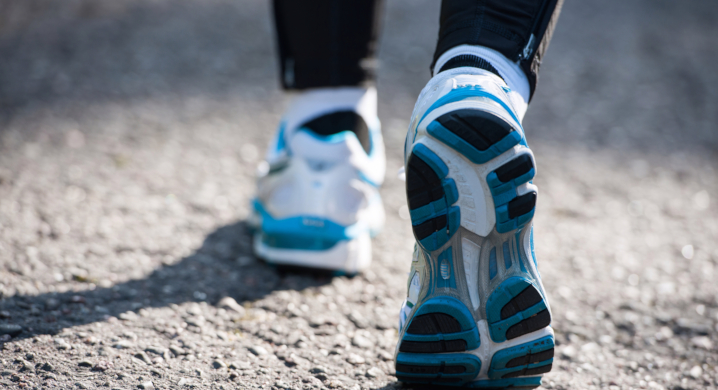
Understanding the Impact of Worn-Out Running Shoes
Physical Effects on Performance
Worn-out running shoes can significantly impact performance and overall health. As shoes age, the cushioning material compresses, reducing shock absorption and increasing the risk of injuries like plantar fasciitis, shin splints, and joint pain. The outsole may lose traction, leading to slips and decreased stability on various surfaces.
Additionally, worn shoes can alter gait mechanics, causing muscle fatigue and inefficiencies in running form. This decline in shoe performance not only hinders speed and endurance but can also lead to discomfort and longer recovery times. Regularly replacing running shoes is essential for maintaining optimal performance and minimizing injury risk.
Injury Risks Associated with Old Shoes
Wearing old shoes can significantly increase the risk of injuries due to several factors:
- Decreased Cushioning: As shoes age, the cushioning materials lose their ability to absorb impact, leading to increased stress on joints and muscles.
- Loss of Support: Old shoes may not provide adequate arch or ankle support, which can result in misalignment and increase the likelihood of sprains or strains.
- Reduced Traction: Worn-out outsoles can lead to slippery surfaces, increasing the risk of falls and related injuries.
- Increased Risk of Blisters and Calluses: As materials degrade, shoes may rub against the skin more, leading to blisters and painful calluses.
- Foot Fatigue: Deterioration of shoe structure can contribute to foot fatigue, which may lead to improper walking mechanics and subsequent injuries.
Regularly replacing shoes based on usage and wear can help mitigate these risks and promote overall foot health.
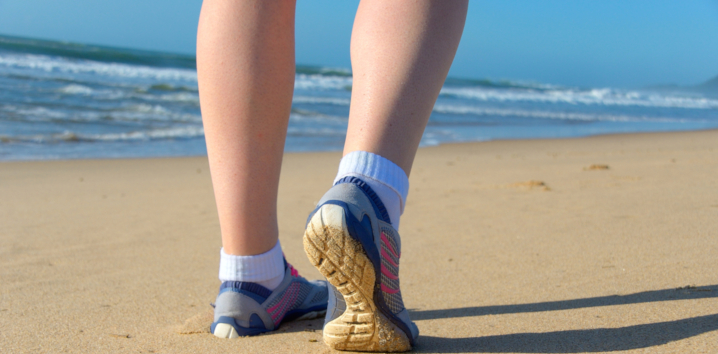
Signs That Indicate It’s Time for a Replacement
Visible Wear and Tear
To spot visible wear and tear, indicating it’s time to replace your shoes, look for the following signs:
- Sole Wear: Check for uneven or excessive wear on the soles, especially in high-impact areas.
- Tread Loss: Inspect the tread pattern; if it’s worn down or smooth, it’s time for new shoes.
- Creasing: Notice deep creases or cracks in the upper material, which can signal loss of support.
- Discomfort: Pay attention to any unusual discomfort or pain during activities, indicating that cushioning may be compromised.
- Separation: Look for separation between the shoe upper and the sole, which affects stability and support.
- Odor: Persistent odors can indicate bacteria buildup, suggesting it might be time to replace them for hygiene reasons.
Uneven Sole Wear
Uneven sole wear can be a clear indicator that it’s time to replace your shoes. When the soles of your shoes wear down more in certain areas, it may suggest issues such as improper fit, gait abnormalities, or inadequate support.
This uneven wear can lead to reduced shock absorption and stability, increasing the risk of injuries. If you notice significant wear patterns, such as excessive wear on the outer edges or the heel, it’s advisable to consider replacing your shoes to ensure optimal comfort and protection for your feet. Regularly inspecting your footwear for these signs can help maintain your foot health and enhance your overall performance.
Decreased Cushioning
Decreased cushioning in shoes can indicate it’s time for a replacement. Over time, the materials in shoe cushioning break down and lose their ability to absorb impact, leading to reduced comfort and support. When you notice less bounce or a feeling of heaviness in your shoes, it may result in increased stress on your joints and muscles.
If you experience discomfort or pain during or after activities, it’s a clear sign that your shoes may no longer be providing the necessary support. Regularly assessing the cushioning of your shoes can help prevent injuries and maintain optimal performance. If you can press down easily on the midsole with your thumb and it doesn’t spring back, consider replacing your shoes.
Loss of Support and Stability
Loss of support and stability in shoes can lead to discomfort and potential injury. If you notice excessive wear on the soles, uneven wear patterns, or if your feet feel fatigued or sore after normal activities, it’s a sign that your shoes may no longer provide the necessary support.
Additionally, if the cushioning feels diminished or if you experience instability while walking or running, it’s crucial to consider replacing your shoes to maintain proper foot health and performance. Regularly assessing the condition of your footwear can help prevent injuries and ensure you remain active and comfortable.
Unpleasant Odor
An unpleasant odor in shoes can be a strong indicator that it’s time to replace them. Over time, moisture, bacteria, and fungi can accumulate inside the shoe, leading to bad smells that are often difficult to eliminate even with cleaning. If you notice persistent odors despite regular maintenance, it may signal that the materials have degraded or that the shoe’s structure no longer supports your foot properly.
Continuing to wear shoes that emit foul odors can not only be uncomfortable but may also lead to foot health issues. Therefore, if your shoes have an unpleasant smell, consider replacing them to maintain hygiene and comfort.
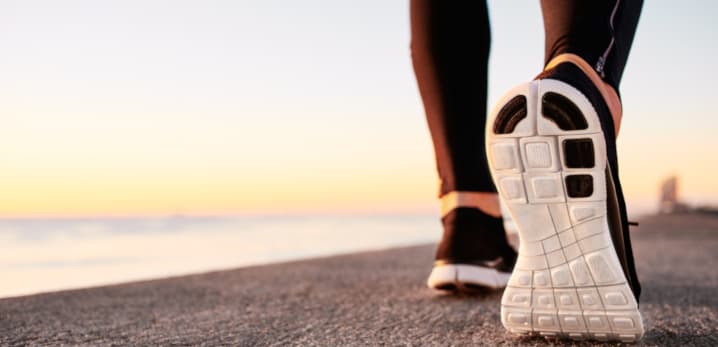
The Lifespan of Running Shoes
Average Mileage Before Replacement
The average mileage before replacing running shoes is typically between 300 to 500 miles. Factors such as running style, body weight, and shoe type can affect this range. It’s important to monitor the shoe’s cushioning and tread wear to determine when it’s time for a replacement.
Factors Affecting Shoe Longevity
- Material Quality: High-quality materials, such as premium leather or durable synthetic fabrics, enhance longevity.
- Construction: Well-constructed shoes with reinforced seams and strong adhesives typically last longer.
- Usage Frequency: Shoes worn daily will wear out faster than those used occasionally.
- Environment: Exposure to harsh weather conditions, such as rain or extreme heat, can deteriorate shoes more quickly.
- Maintenance: Regular cleaning, conditioning, and proper storage can significantly extend shoe life.
- Fit: Poorly fitting shoes can lead to uneven wear and quicker degradation.
- Sole Thickness: Thicker and more robust soles generally provide better durability over time.
- Type of Activity: Shoes designed for specific activities, such as running or hiking, may wear out faster depending on usage.
The Most Durable Running Shoes
Here are some of the most durable running shoes that can last twice the average longevity of a modern running shoe:
Hoka Bondi 9
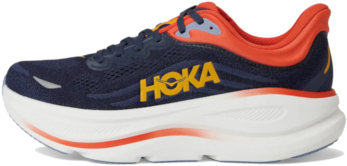
The Hoka Bondi 9 is considered one of the most durable running shoes due to its high-quality materials and construction. The shoe features a robust rubber outsole that provides excellent traction and wear resistance, ensuring longevity on various surfaces. The EVA foam midsole offers superior cushioning and is designed to withstand repeated impacts, maintaining its integrity over time. Additionally, the engineered mesh upper enhances breathability while providing a snug fit, reducing wear and tear.
Shop On ZapposASICS Gel-Kayano 32
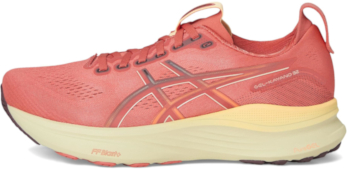
The ASICS Gel-Kayano 32 is renowned for its durability, making it a top choice for runners. Its construction features high-quality materials that withstand wear and tear, ensuring longevity. The shoe is equipped with a reinforced upper that provides support while resisting abrasions. Additionally, the midsole incorporates ASICS’ Gel technology, which not only enhances comfort but also maintains structural integrity over time. The outsole is also designed with durable rubber, offering excellent traction and minimizing the risk of premature breakdown.
Shop On ZapposASICS Gel-Nimbus 27
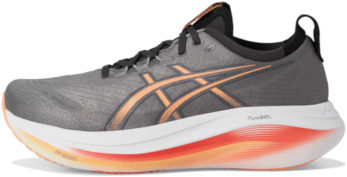
The ASICS Gel-Nimbus 27 is renowned for its durability due to several key features. It incorporates a high-abrasion rubber outsole that enhances traction and extends the shoe’s lifespan. The upper is made from engineered mesh, providing breathability while ensuring robustness.
Additionally, the midsole features FlyteFoam technology, which not only offers excellent cushioning but also maintains its structure over time. This combination of materials and technologies allows the Gel-Nimbus 27 to withstand the rigors of long-distance running, making it a reliable choice for runners seeking longevity in their footwear.
Shop On ZapposASICS Novablast 5

The ASICS Novablast 5 stands out as one of the most durable running shoes due to its advanced materials and construction. The shoes feature a lightweight yet robust mesh upper that enhances breathability while providing structural support (although not as structured as the upper of the Gel-Nimbus 27). The addition of the FF Blast Max technology in the midsole offers exceptional cushioning and responsiveness, reducing wear over time.
The outsole is designed with durable rubber that enhances traction and longevity, ensuring that the shoes can withstand various road conditions. Furthermore, ASICS’ meticulous engineering minimizes the risk of seam failure, contributing to the shoe’s overall durability. This combination of high-quality materials and innovative design makes the Novablast 5 a reliable choice for both casual and serious runners seeking long-lasting performance.
Shop On ZapposBrooks Hyperion 2
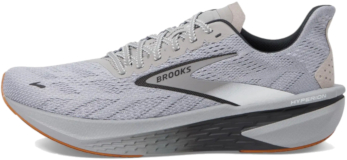
The Brooks Hyperion 2 is renowned for its durability due to several key features.
- High-Quality Materials: It utilizes advanced materials that withstand wear and tear, ensuring longevity even under rigorous conditions.
- Robust Midsole: The DNA FLASH v2 midsole provides not only cushioning but also enhanced resilience, allowing the shoe to maintain its shape and performance over time.
- Reinforced Outsole: The outsole is crafted with durable rubber that offers excellent traction and resistance to abrasions, contributing to the shoe’s lifespan.
- Supportive Upper: The engineered mesh upper offers breathability while maintaining structural integrity, preventing premature breakdown.
Note: If you are looking for one of the fastest stability running shoes, go for the Brooks Hyperion GTS 2. The fact is, there are only a couple of fast-running shoes for overpronators, and Saucony Tempus 2 is the other one.
Brooks Adrenaline GTS 24
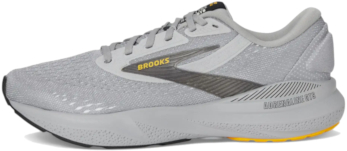
The Brooks Adrenaline GTS 24 is one of the most durable running shoes due to its robust construction and high-quality materials. It features a DNA LOFT v3 cushioning that provides both comfort and resilience, allowing it to withstand repeated impacts. The shoe’s engineered mesh upper enhances breathability while maintaining structural integrity, preventing wear and tear over time. Additionally, the durable rubber outsole provides excellent traction and resistance to abrasion, making it suitable for various terrains.
Shop On ZapposNike Structure 25
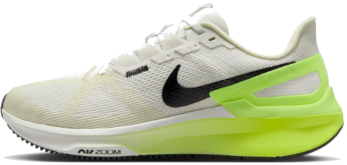
The Nike Structure 25 is recognized for its durability in the stability running shoe category due to several key features. It incorporates a robust upper made from high-quality mesh and synthetic materials, providing both breathability and resistance to wear. The shoe’s midsole utilizes responsive foam technology, ensuring long-lasting cushioning and support for overpronators.
Additionally, the outsole is engineered with a durable rubber compound, enhancing traction and longevity on various surfaces. The reinforced heel counter adds structural integrity, preventing collapse during prolonged use.
Shop On NikeSaucony Ride 18
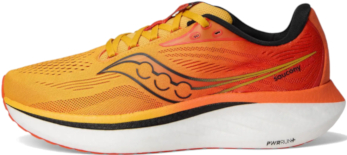
The Saucony Ride 18 is renowned for its durability due to several key features. It incorporates a high-abrasion rubber outsole that enhances grip and extends the lifespan of the shoe. The midsole is constructed with a reformulated PWRRUN+ cushioning, providing resilience and support while maintaining comfort over long distances.
The engineered mesh upper offers breathability along with a secure fit, reducing the risk of wear and tear. Additionally, the shoe’s overall design focuses on stability, which helps minimize excessive movement that can lead to premature damage.
Shop On ZapposSaucony Triumph 22
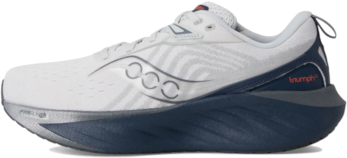
The Saucony Triumph 22 is recognized for its durability due to several key features. First, it utilizes a high-abrasion rubber outsole that provides excellent traction and resistance to wear. The PWRRUN PB cushioning technology not only enhances comfort but also maintains its structure over time, ensuring longevity.
The engineered mesh upper also offers breathability while being resilient against stretching and tearing. Additionally, its reinforced stitching and overlays contribute to overall strength, making it suitable for varied road conditions and long-distance running.
Shop On ZapposChoosing the Right Time to Replace Your Shoes
Listening to Your Body
Listening to your body is crucial when determining the right time to replace your shoes. Signs like discomfort, increased fatigue, or pain during and after workouts indicate that your shoes may no longer provide adequate support. Additionally, if you notice changes in your stride or if the cushioning feels less effective, it’s time to consider a replacement.
Regularly assessing the condition of your shoes, along with paying attention to how your body responds, can help prevent injuries and ensure optimal performance. Prioritize your comfort and well-being by replacing your shoes when needed.
Keeping a Log of Shoe Usage
Keeping a log of shoe usage is crucial for determining when to replace your shoes. Tracking your mileage helps you identify wear patterns and assess shoe performance over time. Different types of shoes have varying lifespans, typically ranging from 300 to 500 miles for running shoes.
By recording your usage, you can avoid injury from worn-out footwear, maintain optimal support, and ensure proper cushioning. Regularly reviewing your log allows you to make informed decisions about when to invest in new shoes, enhancing your overall comfort and performance.
Final Thoughts on When to Replace Your Running Shoes
In conclusion, understanding when to replace your running shoes is crucial for maintaining both performance and safety during your runs. By paying attention to the signs of wear, such as decreased cushioning, visible damage, or discomfort while running, you can ensure that your footwear continues to support your body effectively.
Regularly assessing your shoes not only enhances your running experience but also helps prevent injuries, allowing you to pursue your fitness goals with confidence. Prioritizing the health of your feet will ultimately lead to a more enjoyable and sustainable running journey.
You may also like:
